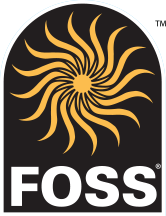Have you ever planned a hands-on science lesson that seemed to go perfectly? Students were busy, engaged, and having fun, only to realize afterward that they missed the big science idea entirely. You’re not alone. The truth is, even the most exciting activities can fall flat if students don’t have a chance to make sense of what they’re doing.
That’s where sensemaking comes in. When we plan science lessons with sensemaking in mind, we provide students with opportunities to explore, question, and connect their ideas to the world around them. In other words, they’re not just doing science; they’re thinking like scientists.
What Is Sensemaking?
According to the National Science Teaching Association (NSTA), sensemaking happens when students actively figure out how the world works by engaging with four key attributes:
- Phenomena
- Science and engineering practices
- Student ideas
- Science ideas
When these four elements work together, students move beyond memorizing facts; they begin to reason, explain, and apply scientific concepts in meaningful ways. As FOSS Professional Learning Specialist Leslie Lawston puts it, “Sensemaking isn’t just one moment in a lesson. It’s happening from the very start.”
Start with a Phenomenon
Every great sensemaking experience begins with a phenomenon. A real-world event that sparks curiosity and wonder. Leslie often begins lessons with something simple and familiar, like puddles forming on the playground after a rainstorm.
Students start by observing: Where do puddles form? Why are some areas wetter than others? Why does the water bead up on the slide but soak into the grass?
These questions become the foundation for learning. A good anchor phenomenon provides students with something authentic to explore; something that feels relevant to their everyday experiences.
Investigate, Explore, and Model
Once curiosity is sparked, it’s time to get hands-on. Students test their ideas by experimenting with different surfaces, such as foil, paper towels, wax paper, and natural objects, to see how water behaves. They record observations, sketch what they see, and discuss their findings with classmates.
As Leslie notes, “Hands-on learning is powerful because it connects the concrete and the conceptual. When students manipulate materials, they’re not just playing. They’re constructing understanding.”
Throughout these explorations, students create and revise models that show their thinking. Whether it’s a class notebook projected on a screen or sketches in a student journal, these models help make learning visible. Over time, students refine their models to show new understandings about absorption, evaporation, and the water cycle.
Make Thinking Visible
A key part of sensemaking is helping students externalize their thinking so they can see it, question it, and refine it. Class notebooks and science journals are perfect tools for this.
Students might start by creating a simple model of puddles forming after rain. As they investigate, they’ll add new evidence and revise their diagrams. Teachers guide the discussion with questions like:
- What happens when the cup is on the windowsill?
- Why do you think condensation forms on the sides?
- How does this connect to the water cycle?
By capturing these evolving ideas in a shared class notebook, teachers and students can literally see their understanding deepen over time.
Sensemaking Discussions: Where Ideas Come Together
After the investigations, it’s time to pull it all together. In a sensemaking discussion, students share observations, connect evidence to explanations, and apply what they’ve learned back to the original phenomenon.
For example, students might return to the puddles on the playground and explain that water collects on waterproof surfaces, such as blacktops and slides, but soaks into porous materials, like grass. They use vocabulary like absorption, evaporation, and condensation because they’ve seen those processes in action.
This is where real learning takes place. As Leslie explains, “When students talk about their ideas, they’re not just recalling information. They’re refining their understanding.”
Supporting Synthesis Through Multimodal Learning
Sensemaking doesn’t stop with one mode of learning. When students see, hear, read, discuss, and engage in hands-on activities, they participate in multimodal learning, which supports synthesis: the ability to integrate ideas from multiple sources.
Students who:
- Observe a phenomenon,
- Conduct an investigation,
- Read about the related concept, and
- Reflect in writing
… are not only making connections, they’re developing critical thinking and problem-solving skills that extend far beyond the science classroom.
Structured discussions like Claim-Evidence-Reasoning (CER) or Socratic seminars can further support synthesis by prompting students to connect their experiences to scientific principles.
Practical Tips for Getting Started with Sensemaking
If you’re ready to bring more sensemaking into your classroom, start small and build from there. Here are some tried-and-true strategies:
- Shift learning goals from memorizing content to explaining phenomena using science practices.
- Create a safe space for students to share, challenge, and revise ideas.
- Model talk moves such as clarifying, paraphrasing, or asking for evidence, and focus on one at a time.
- Use sentence and question frames to help all learners participate confidently.
- Label and display vocabulary and encourage students to use those words in discussions and writing.
Sensemaking doesn’t require a brand-new curriculum; it simply requires a mindset shift from covering content to uncovering understanding.
Why It Matters
When students engage in sensemaking, they’re doing more than learning science facts; they’re building habits of mind. They learn to ask thoughtful questions, test their ideas, use evidence, and communicate reasoning.
As Leslie sums it up perfectly, “Sensemaking just makes sense. It transforms science from something students memorize into something they understand.”
Download this FREE worksheet to help guide your Sensemaking activities.
Looking for more information on Sensemaking? Watch our free webinar today! Sensemaking and Elementary Science: That Just Makes Sense! For PreK-5 teachers, curriculum specialists and coordinators, school leaders, and district leaders.

